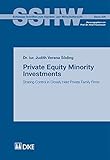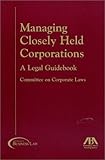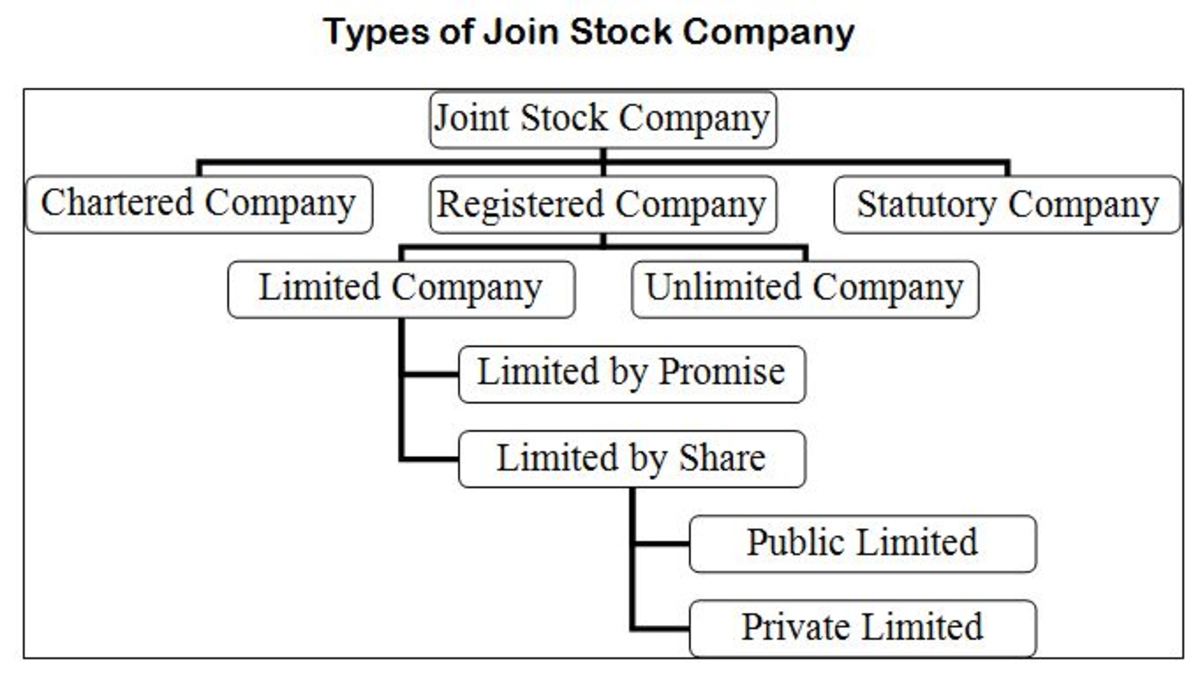THINKING ALOUD (BusinessLaw) BUSINESS MODEL: A Closely-held Company

Chén Róng’s
Little English-Chinese Dictionary
- Fits our bill = shì hé mù dì
- raison d’detre = cún zài lǐ yóu
- on the fly = cōng cù
- up and running = yǐ kāi shǐ jìn xíng de
- moot point = zhí de shāng què
- Wild-West style = wú fǎ wú tiān
- Wow-factor = lìng rén jīng yàn zàn tàn
QUASI-PARTNERSHIP disputes
Writer: Chén Róng
Some companies are quasi-partnerships and yours may be one such partnership.
A number of individuals may come together and contribute equity to the running of a small business. They may agree on the formation of a limited liability company for their business. There are an increasing number of such small partnerships in Asia as people are keen on trying their hands running their own business at mid-life whence they find their work less fulfilling.
The law regards this business as a ‘quasi-partnership’ between those individuals involved regardless if it was originally formed as such and subsequently converted to a limited liability company. It may come as a surprise to some people that when a legal dispute arises, a court may actually accord the partnership a higher standard of governance than ordinary companies. Hence, a court may be more willing to enforce rights of minority shareholders; rights that may not be accorded to them in ordinary companies. Hence, a minority quasi-partner involved in the management of the business, can seek out court protection against being ousted or excluded from the running of the business, without any reasonable cause.
In one case, two partners were ordered by a judge to buy up the shares of a third partner in an abattoir business; the latter was unfairly ousted after an internal dispute. It was ruled that the firm was set up based on a verbal understanding between the three that all be accorded equal management rights and remuneration, among other things. The court re-affirmed the legal position of a quasi-partnership as one based on trust and confidence, and that those in charge should govern with integrity. The defendant partners in the present case were found to have acted unscrupulously and had departed from the standard of fair dealing; the court ordered them to buy out the shares of the plaintiff partner.
Controllers of quasi-partnerships should be aware of the higher standard of governance expected of them compared with controlling shareholders of ordinary companies. Hopefully, such awareness may help lessen incidences of internal disputes and costly law suits.
READ OTHER STORIES AT:
http://chenrong.hubpages.com
Re-structuring a Closely-held business
Writer: Chén Róng
The Asian business landscape is one dotted with family in-fighting. Such unsightly events are wrecking up otherwise good relationships between second and third generation heirs who have the good fortune to inherit massive wealth from their fore-fathers. In majority of cases, control of the family business is in the hands of a small group, ostensibly for the benefit of every member, but unfortunately, it is not always viewed as such by everyone. The family's portfolio may consist of tens of private companies owned through a number of trusts. Tearing into pieces something fathers, uncles and relatives had put together decades ago may not be an easy task. The challenge is: how to go about dismantling the business structure in an orderly way so that what remains will work for the collective interests of the family.
- Mending family rifts
A rift was perhaps inevitable. The heirs were pursuing their own careers, mostly outside the family business. They were resistant to the control of the small group of directors and their lack of transparency. These controlling directors were often being verbally accused of siphoning off family funds to enrich themselves. Younger family members are less connected to the legacy business built by their elders. It is important to be mindful of their suspicions and their different interests. In these circumstances, what should follow would be a plan, conceived by these controlling directors to reorganize the family holdings to give the heirs control over their own fortunes.
- Closing a small family business
If the breaking up of the legacy business is that of a small family business that does not involve a complex web of holding company and subsidiaries with diverse activities, things may seem a lot easier. If selling the business is the only solution to the family conflict, it pays to appoint a mediator for everyone to come away happy. A mediator serves to open the lines of communication. Being neutral, all parties will likely feel at ease to discuss all issues at hand.
When picking a mediator, always evaluate how well he/she understands the specific industry and region. The services of a valuation expert (if the mediator is not one) will include putting a price tag on the company by accurately assessing assets, cash flow, branding, local competition, etc. With a valuation, there are two possible methods to go about dismantling the business.
One way is to allow certain family members to stay in management and run the business. In this case, it is best for staying members to buy out other members using the valuation set by the appointed mediator (or valuer). If none of the current members want to work in business anymore, the business shall be put up for sale to an investor or a competitor by placing advertisements in business newspapers/magazines or the appointment of a broker.
- Closing a more complex family business
For complex family business with numerous joint ventures and subsidiary companies, the dismantling process will involve lots of haggling. A suggestion: Have the dissenting heirs collectively appoint their own lawyers. With lawyers on both sides negotiating every step, the heirs may reach a private agreement to restructure their holdings over a shorter period than one without the services of legal experts.
The execution may involve a number of phases: accounting for the biggest assets; creating stand-alone companies to establish value; and finding the right exit strategy for each, without triggering extra taxes on the companies. There may be a need for a structure to monitor the plan's progress, and a process to resolve disputes. A structural plan is one where everyone's incentives were aligned and targets had to be met. It will also have names of persons-in-charge with responsibility for execution of deals. Assets sold and names of buyers are accordingly recorded accurately. Such responsibility should go to family members who knew the businesses best.
Large asset sales may need the involvement of banks whose interest may not necessarily align with family interests. Banks may go for prompt sales and probably upset employee morale and disrupting otherwise smooth execution. Running an auction sale without involvement of a bank may be considered an alternative to private deals. This will involve considerable expenses. A private deal can save the family a tidy sum of money but some family members may question why private deals instead of running an auction to get the highest price.
- Happy Ending
Hostilities between family members will cool with sale monies rolling in and with regular updates on the plan's progress. A patient approach may be the key to a successful breakup of the business as against selling it immediately and hastily as some families do. Not all relatives are on speaking terms, but the right thing to do is to encourage them to rebuild ties within the family. Finding the right formula to re-structure the business is the way to building such family ties.
READ OTHER STORIES AT:
Chenrong.hubpages.com
BUSINESS STRUCTURE
A Closely-held Company
Writer: Chén Róng
Benjamin Franklin once said: "If you fail to plan, you are planning to fail!" Hence, this guideline plan will be designed to meet particular requirements, stating specific articles and rules for inclusion alongside general ones. General articles will be excluded to keep this write-up concise and readable, providing space for sharing our thoughts on legal and commercial considerations to grow our business.
Just suppose, business partners (they include some family members) and I intend to jointly form an international trading business, and we decided on incorporation to limit our liability to outsiders for reason that Asian societies are now more litigious. Many other entrepreneurs may prefer their start-ups as limited liability partnerships. Whatever the desire may be, every business structure has its own nuances with different features in terms of regulatory requirements, taxation, and liability to owners. For our purposes, we have in mind a closely held firm in the form of a private company limited by shares. It will be a corporate structure with specific articles of incorporation and rules essential for the long-term building of relationships between owners of the business and those appointed to managing the company.
Basically, a closely held company is one with a relatively small number of shareholders; and there is no active trading market (stock exchange) for its securities. This definition fits our bill. Being a private company limited by shares, our small group of shareholders will control the operation and managerial policies of the firm. In other words, we will serve as shareholders, officers and directors in the day-to-day running of the company. Our closely-held company will run in manner similar to a quasi-partnership between members; and it is the raison d'être of every founding member to get involved in the management of the company.
We should never set up a company on the fly. Instead, close attention has to be given to the formalities of establishing and operating the corporate structure to avoid future problems. Many issues can and do arise when the company is up and running -- matters such as an unexpected audit by the tax authority, in the event of disputes between shareholders or unforeseen lawsuits against the company. For these reasons, the limited liability protections of the corporate form have to be properly installed. In addition, as founding members we, too, need to seek legal advice to ensure that the foundations of our business are on firm grounds.
-
Place of Incorporation
There is no legal requirement that we have to incorporate in the place where the business will be conducted. There is also no restriction that the company has to conduct business in the state of incorporation, although a company generally must have a registered agent in that country.
Nevertheless, every company needs to comply with regulatory rules on conducting of business in a foreign country. Each country has its own set of rules to regulate commercial activities of foreign entities. Our company is not different from other establishments, so before embarking on substantive activities, due diligence will ensure we do not contravene any law. Falling foul of rules might also lead to disqualification of rights to sue in a court of law in the event of commercial disputes.
For our purposes, both Singapore and Hong Kong are suitable venues for incorporation. Both cities have well-established corporate laws and commercial men consider their commercial courts generally receptive of the concept of separation of powers between shareholders as owners and directors as managers. Nevertheless, this is a moot point in the case of closely-held companies where the shareholders are also the managers of the company. But our preference for either Singapore or Hong Kong is one reason why we have chosen for the limited liability company route. These jurisdictions encourage risk taking and entrepreneurial activities to grow the business in Asia through the use of subsidiary firms or forming joint venture companies with foreign partners.
The tax system in Hong Kong and Singapore allows transfer of group relief tax losses and capital allowances to related companies within a business group as one way to lowering of business costs. Such a group tax relief system, while subject to regulatory conditions, will also assist in improving cash flow of the business. We will write our thoughts on holding company structures in a sub-hub for future reference. Company laws in these two cities are still evolving and expect to continue to be more friendly toward small and medium sized companies in the coming years. One common advantage shared by both cities as homes of choice for foreign companies is the absence of bureaucratic red-tapes as companies can be up and running within a relatively short time. But Hong Kong is often preferred by entrepreneurs for strategic purposes.
The proximity to the huge China market may be reason why foreign companies prefer to have their holding companies incorporated in this post-British era colony. In our case, our shareholders might prefer to have our joint venture or subsidiary companies in Hong Kong and our closely-held holding company incorporated in Singapore because our other important markets are Indonesia, Malaysia and Vietnam.
But are we not setting up our business in questionable corporate tax havens or their hybrid entities?
There were accusations by western governments that both cities served as tax havens for tax evaders, putting them in the ranks of Switzerland, Luxembourg and Cayman Island. Money launderers and tax-dodgers were found incorporating shell-holding companies in tax haven countries for evasion of taxes. Using a sham company as the nominal account holder puts a layer of secrecy between an account and its beneficial owner - similar to numbered accounts prohibited by international anti-money laundering regulations. We will not deviate to discuss the merits of these accusations. Nevertheless, with the signing of information exchange treaties with partner countries, both Singapore and Hong Kong are no longer on the black list of partner governments.
-
The Corporate Structure
Roles of the Shareholders
The shareholders are the owners of our company. They are the ones to elect and change directors when appropriate; and to vote on all major corporate changes -- mergers and acquisitions; consolidation or liquidation, change in capital and events that could fundamentally change the business of the company. In general terms, public shareholders do not get to manage the company. Management is a function which rests solely with a Board of Directors. In a closely-held company, this separation of powers is less transparent because shareholders, directors and officers are the same group of people. For this reason, care must be taken in choosing the right people for partnership in a business. It is equally important to appropriately select who should be on board as directors, as they are crucial to the determination of business direction of the company.
A person should not be given a board seat for reason that he is a shareholder. This may be a fundamental rule; invariably, in a closely-held or controlled company, management must continue to control at least 70% of the voting shares. That is how our founding members will structure the company as it grows to invite others to join as equity holders in future.
We will follow tradition: one share, one vote for all shares with voting rights. A shareholder with more shares will have more control over the making of decisions and hence control of the company; although this is not always what shareholders want in other situations. Sometimes it can be beneficial for everyone to have an equal say. But we consider it more beneficial to give a greater say proportionately to someone who has contributed more.
Roles of Directors
The Board of Directors are duty bound to oversee the company's management and all its business affairs including the appointment of officers in the day-to-day running of the company.
In our closely-held company, owning shares in the company is a pre-requisition for board seats. Size of shareholdings is not a deciding factor for a member to serve in the position of a director in this quasi-partnership but the same requirement may change for companies of the group as the business grows. Although the number of directors may be as few or as many as the number of shareholders, a suitable number with each director having unique qualifications and experience may serve us better. Other qualifications required for serving as a director, if any, can also be decided upon by our members for laying down in the bye-laws of the holding company and member companies.
The Board is to hold regular meetings, but these may be done by telephone or telephone-conferencing without physical meetings, if written consent is given unanimously.
Conflicts of interest can occur when a director-shareholder makes an operational decision that benefits him, but not all other shareholders. It is difficult to ascertain if he was acting in his capacity as a director accountable to all shareholders; or acting as a shareholder and not accountable to his fellow shareholders. Disclosure of decision making is important. A shareholder-director may be able to make decisions without first reporting to other shareholders. By clarifying what a director-shareholder may or may not do without notifying the shareholders will prevent him from acting in manner that is against the interests of other members. The way to ensuring no conflicts of interest is to use a Shareholders Agreement to set out the role of a shareholder, and a director's service contract to set out the role of a director. The Agreement by lying down situations on decision making by director-shareholder will clarify when he may or may not do so without the consent of other members.
A director's service contract should also serve as an employment agreement that sets out disciplinary and grievance procedures. All executive directors are also employees. This gives shareholder-directors additional rights over non-employed shareholders because an executive director can threaten great disturbance and expense by taking the dispute to an employment enforcement agency.
The Roles of Officers
Officers are responsible for the management of the company. In many closely-held companies, the shareholders will usually elect themselves as officers and run the company with few corporate rules, using their official positions only in formal situations. Running a company in a Wild-West style management means that directors are completely hands-off, allowing officers to manage their various departments without regard to formalities. It is not a recommended corporate governance style. The company's by-laws will need to define the scope of duties of each managerial position within the organisation. Without such regulatory provision, senior executives may choose not to give management comprehensive details of problems they identified. Such internal control breakdowns are breaking a cardinal rule of good corporate governance, depriving the Board of Directors critical information it may need to fully assess the company's problems. It seems like a lot to ask for a small closely-held company. Perhaps. But it is not. Because a small group of almost equal shareholders are wearing many hats, it will be difficult to make changes once bad habits are in place. The growth of the company with the inclusive of new shareholders and, probable public listings of its shares in a major stock exchange may be hampered because of the initial improper planning.
-
Articles of Association (By-laws)
A company's Articles of Association serves as contracts between the company and its members, and among the members themselves. The Articles govern every aspect from the conduct of board and general meetings to the appointment of directors. They form the internal regulations governing the running of the company - matters such as powers, obligations and rights of shareholders and directors of the company. The Articles of Association is open to public viewing once filed with the Registry of Companies. Hence, for all sensitive company details, we prefer to set them out in a Shareholders Agreement.
The Articles of Association is also the place in which the corporation may opt in or opt out of very important elective provisions under governing corporation laws of the choosing country (i.e. Singapore or Hong Kong)
An Objects Clause
Companies may be formed for any lawful purpose. The certificate of incorporation should actually state a broad catch-all lawful purposes clause -- a practice generally adopted by companies in past years. This is to avoid limiting the company to acting in furtherance of the stated purpose, depriving itself of business opportunities that may arise in the ensuing years. However, the Object Clause is no longer required under the Hong Kong and Singapore laws. Some founding members may not be comfortable investing in a business intended for too wide-ranging activities; businesses that may be totally unrelated and considered speculative and risky. Stating the objects of a business in the Articles may not be a bad thing. If a change is to be made at a later stage, it can still be amended by a way of a Special Resolution i.e. 75% or more of the shareholders in a general meeting.
A word of caution: In some countries, laws do allow closely-held private companies (even if their subsidiaries may be public-listed) to prevent the amendment of their Objects Clause. For instance, The Articles of Association of furniture conglomerate - Ikea's Foundation in the Netherlands - and registered as a public record, state that its Objects Clause cannot be amended. Even a Dutch court can make only minor changes as its objects are cast in stone, figuratively speaking.
Board of Directors
Retirement by Rotation: Articles of some private companies may provide for directors to retire by rotation. This provision is not always appropriate for small private companies as there is a chance that this requirement may be overlooked. A failure to deal with it at an Annual General Meetings, e.g. by re-electing the retiring directors, can lead to issues as to whether or not certain directors may hold office.
Resignation: Some Articles permit a director to resign on his own accord by tendering his resignation in writing. We opt for the requirement that a director resigns by agreement with the company.
Some Articles may contain comprehensive provisions for the removal of directors. The quasi partnership status of our company requires our consideration to restrict the Articles to authorising removal of directors under the following circumstances:
A director shall be removed if he (i) is adjudged a bankrupt; or (ii) becomes incapacitated or of unsound mind; or (iii) is convicted of an indictable offence or (iv) is disqualified under corporate laws of a country.
Removal by the shareholders may be done by an ordinary resolution and that is how the Articles are to be framed. Removal by the directors shall be done by resolution of the Board and directors are expected to exercise this power bona fide in the best interests of the company and not out of ulterior motives.
A person may be disqualified from acting as a director under relevant sections of corporate laws. A disqualified director can have no involvement in its promotion, formation or management of any company for the duration of his disqualification. This will also trigger automatic removal under a company's Articles.
Share Capital
Authorized Shares: The authorised capital provisions (now abolished) were created in the days when stamp duty was paid on registration of a company's memorandum. The amount of duty paid depends on the amount stated as authorised capital. The higher the figure, the higher the duty paid. There is now no stamp duty payable on authorised capital. So why place an artificial ceiling on share capital? It is an unnecessary hurdle in its way! Shareholders can always agree among themselves to increase a company's share capital.
Different classes of Shares: All private companies in Singapore and Hong Kong, including those that are subsidiaries of public companies, are allowed to issue ordinary shares with no votes or any number of votes per share.
Our company, as it grows to include new shareholders, can issue new ordinary shares with no votes. Alternatively, we may prefer having a class of shareholders with special voting rights or preferential treatment for payment of dividends or upon liquidation. Nevertheless, it is to be noted that If the company creates different classes of stock, each member within the class must be treated equally - a basic principle of corporate law. Each shareholder holding the same class of shares must be afforded the same rights as all others in that class e.g. each shareholder must be afforded a pro rata share of dividends and equal voting rights.
In some closely-held companies, owners of the company may be given considerable freedom in allocating their initial contributions between debt and equity, that is, between loans to the company and purchase price for shares. We do not recommend having this arrangement as it can lead to serious legal and accounting issues.
Injection of Capital: But we will authorise the issuing of preferred stock in our financing arrangements with lenders. We will authorize the board of directors to issue preferred without having to first seek the approval of existing shareholders. This financing option is a tool that will empower the Board to broaden the capital base. Debt and equity can be combined. Convertible debt, being a loan, can be converted to equity under circumstances specified in the instrument. Preferred stock is preferred by financiers because it has some of the characteristics of a loan. It pays a preferred annual dividend in a fixed amount. Moreover, in the event a company goes bankrupt, the preferred stockholders (the bank) will get paid before common stockholders.
Loan agreements usually restrict what a company may do. It may not take on more debt or sell off certain collateral. This gives the lender considerable power. There are added complications when the lender is also a shareholder. Our Shareholders Agreement shall include provisions for changes of rights if a large creditor-financier be introduced into the corporate scene.
There may be a need for our Articles granting a particular shareholder or group of shareholders enhanced voting rights on a resolution to remove certain directors. For example, where a financier in a company is given the right to appoint a director, the Articles may provide that the financier may exercise ten votes for every share it holds on a resolution to remove him from office.
- Employment Agreements for shareholders
Some closely-held companies use Shareholders Agreements to provide for employment of shareholders as their officers and employees. We prefer using separate employment agreements giving each employee-shareholder established terms of employment and provisions for rights of the parties on termination. Employee benefits and share options that are not appropriately included in a shareholder agreement can readily be included in an employment agreement. It may seem strange to allow for termination when employees are shareholders, but there may be circumstances that call for an employee-shareholder to leave the company.
An employee-shareholder will have certain rights which a general employee has, including those in relation to unfair dismissal, redundancy and certain statutory rights to request flexible working and time off for training. Every employee-shareholders will be protected from unfair dismissals, such as those stemming from discrimination or events brought about by whistle-blowers. Existing employees cannot be forced to take up employee shareholder status, but employers can choose to offer only employee shareholder contracts to new joiners.
- Shareholders Agreement
The Articles of Association is open to public viewing once filed with the Registry of Companies. Hence, for all sensitive company details, we prefer to set them out in a Shareholders Agreement.
Management structures and corporate governance rules may be customized to suit closely held companies and this may be done through the use of Shareholders Agreements. For this reason, this document may be the best way to set out what a shareholder-director may or may not do in his role as a shareholder; and a director's service contract to set out his role as a director.
Another purpose of the Shareholders Agreement is to restrict the freedom of action of the directors and other shareholders to protect the rights of one or more minority shareholders. Such identification of the interests of all parties is crucial and the protection of minority rights should be upheld in the Agreement.
Approving a change in business direction:
Every business evolves, and over a period of time, it may change in its product lines or services offered. It may choose to re-locate its business which calls for new management style in running the business. Some changes may be more risky than others, especially when they involve shareholders acting in apparently conflicting roles such as when they trade with a company with its majority shares owned by a shareholder. A Shareholders Agreement should set out when approval of members will be required for change of business transactions. The Agreement may also set out the business directions in which approval of shareholders will be needed for all business plans produced by the directors on a regular basis such as at an Annual General Meeting.
These procedures to be taken will enable us to form and organise a company but there is yet one major step to be done for a working and long-lasting business arrangement. When there are two or more shareholders in a closely-held company like ours, there should always be at hand a comprehensive Shareholders Agreement to address the affairs of the company. With this in mind, a Shareholders Agreement is also a contract among shareholders covering any corporate matter the owners think should be included, not just how their shares should be voted and what restrictions should be placed on them.
Management of the Company:
The Agreement stipulates the number of seats on the board given to each shareholder and set out any company actions that will require a great majority or unanimous consent of the shareholders. In our case, each shareholder gets one seat regardless of the amount of voting shares that he holds.
Shareholdings of the company:
The Shareholders Agreement shall provide rights of first refusal to buy out shares of departing shareholders, such as death and disablement of a member. This would enable the remaining shareholders to acquire those shares and retain control over the company; including the decision on who will join them as new shareholders. Buy-outs will be funded with the purchase of key-person life insurances to cover purchases on death.
- The Shareholders Agreement shall spell out rights of every shareholder to have his shares transferred to family members such as his spouse or children in the event of his death. It shall also list out circumstances if a shareholder may transfer shares to family members for other reasons, such as estate planning.
- The Shareholder Agreement shall list out circumstances under which shareholders will have a demand-purchase rights which enable existing shareholders to buy out other shareholder(s) or to force the buyout of his or her shares.
Valuation of Shares:
Valuation of a private company is highly subjective. There are many ways to estimate its value such as discounted cash flow or multiples of earnings methods; although it is impossible to put a definite value on a company. Any value in its books of accounts is subjective opinions of the accountant or its owner. When considering the protection of shareholder value, each shareholder may place more value on some things than others.
Book value method may be a good measure of the company's worth of fixed assets and adequately depreciated in its books. Moreover, a trading firm has few or no intangible assets that may be difficult to place proper values on; hence, a book value valuation method may be suitable for our purpose. That is one option which we can consider using.
Other options used by trading companies is the valuation method based on sales or earnings taken over a period of time and the use of a proper multiple. It seems like a fast and easy method for shareholders to use. However, a start-up has no earnings and little sales, therefore, such a valuation method can only be used after the company has completed at least three years of operation.
-
Concluding thoughts
In today's competitive business world, success requires an edge. It really comes down to the wow factor that makes a company stand out in the crowded corporate world. In the context of forming a lasting and coherent business partnership between like-minded people, the wow factor is to see how a few individuals working from scratch is able to build and grow a business that lasted a few decades. The writer himself saw how three young and highly motivated persons successfully built a group of companies in the offshore marine business; building much from scratch and with little seed capital. They made it into a multinational business empire listed on the Singapore stock exchange. Today, these three grey-haired partners have retired from active management but remained bosom friends. In the writer's opinion, much thinking and planning go into organising such a highly successful company from the word - go. By paying close attention to all formalities of establishing and operating a company, partners can overcome problems, sometimes unforeseeable ones such as unannounced audit by the government agencies and misunderstanding that leads to disputes among shareholders. At other times, events may threaten the company position as a going-concern or the protections accorded to it by the corporate form of organisation.
If you are reading this article because you have in mind to start a business partnership -- we wish you good luck. But luck enters the equation when you seize the moment in building a great corporate structure from day one.
READ OTHER STORIES AT:
http://chenrong.hubpages.com
---- E N D -----
Hubpages do not support words written in the Chinese Language. Readers can get a free online English-Chinese translation from GOOGLE TRANSLATE OR TRANSLATED.net
I have also included ChénRóng’s Little English-Chinese Dictionary for a more precise translation of select English phrases from the article.
……………….
Disclaimer
The writer makes no warranty of any kind with respect to the subject matter included herein or the completeness or accuracy of this article which is merely an expression of his own opinion. The writer is not responsible for any actions (or lack thereof) taken as a result of relying on or in any way using information contained in this article and in no event shall be liable for any damages resulting from reliance on or use of this information. Without limiting the above the writer shall have no responsibility for any act or omission on his part. Readers should take specific advice from qualified professionals when dealing with specific situations.












